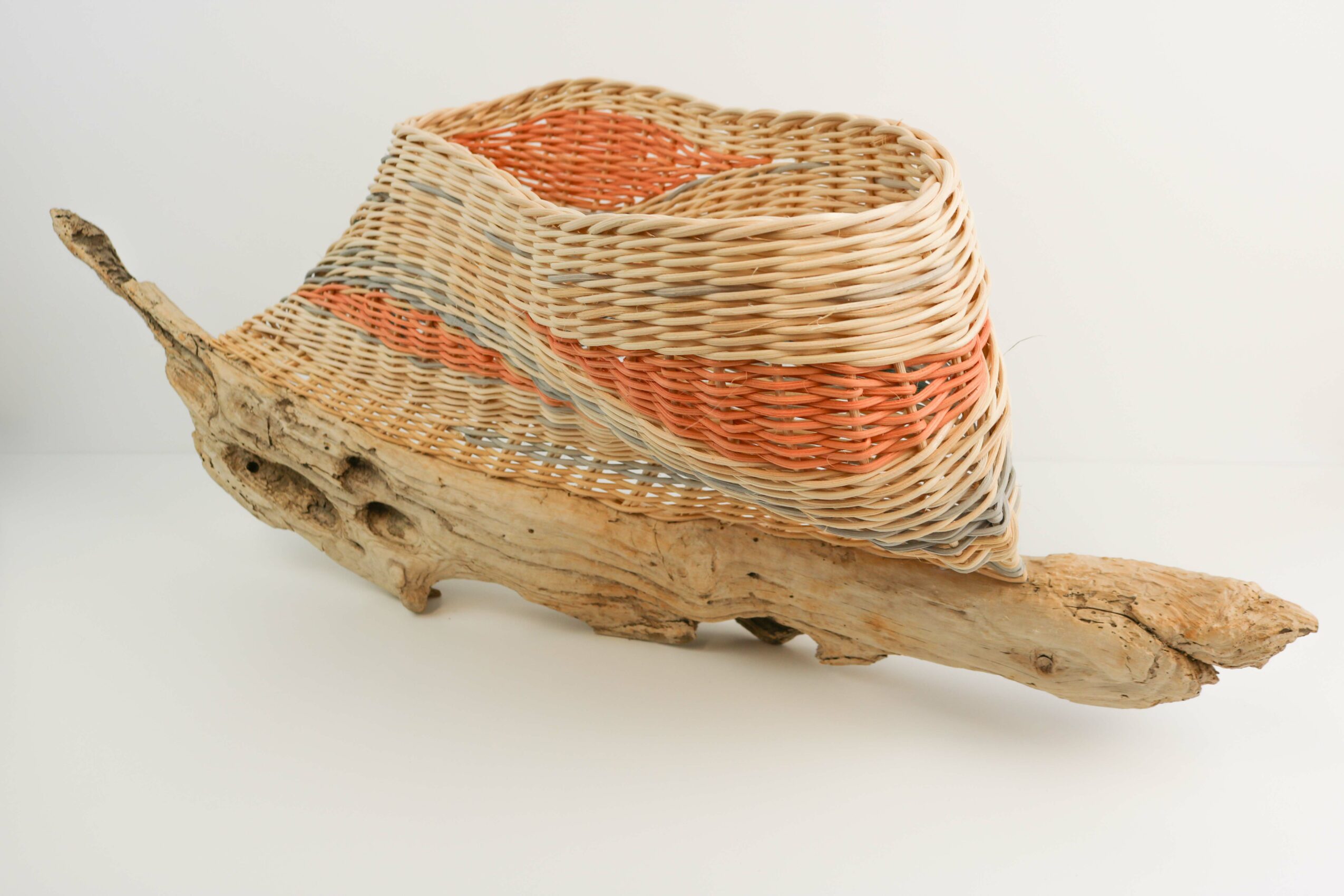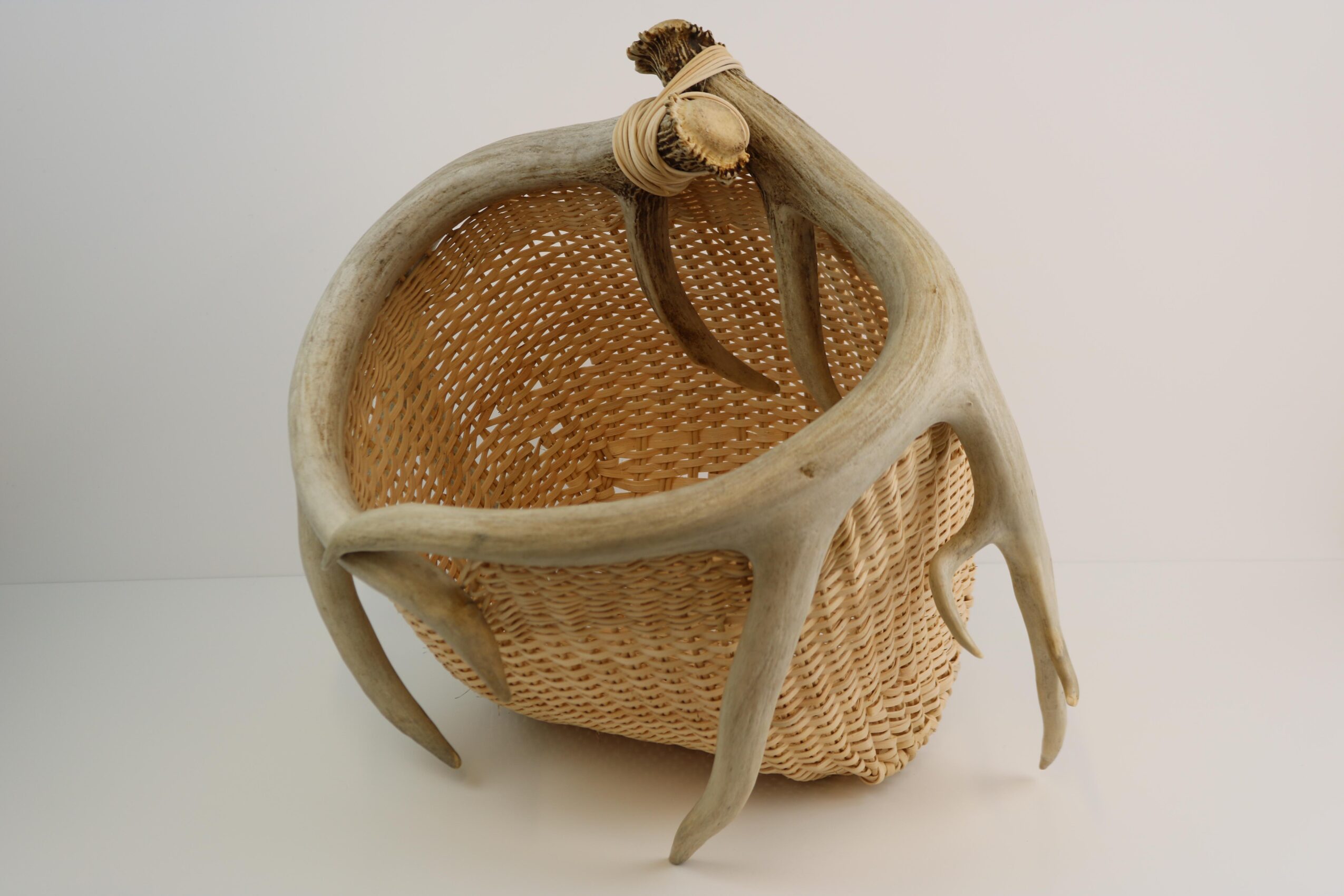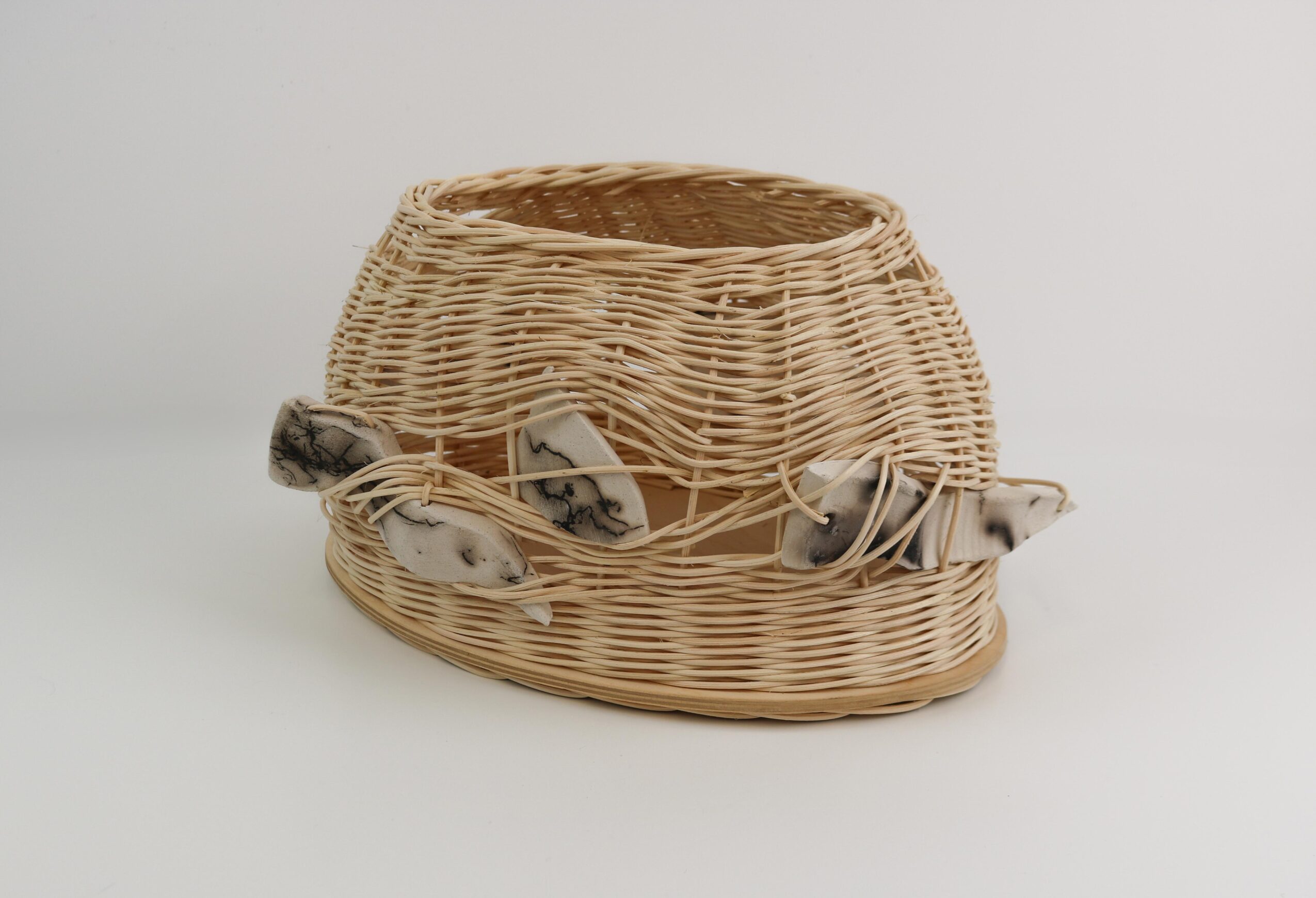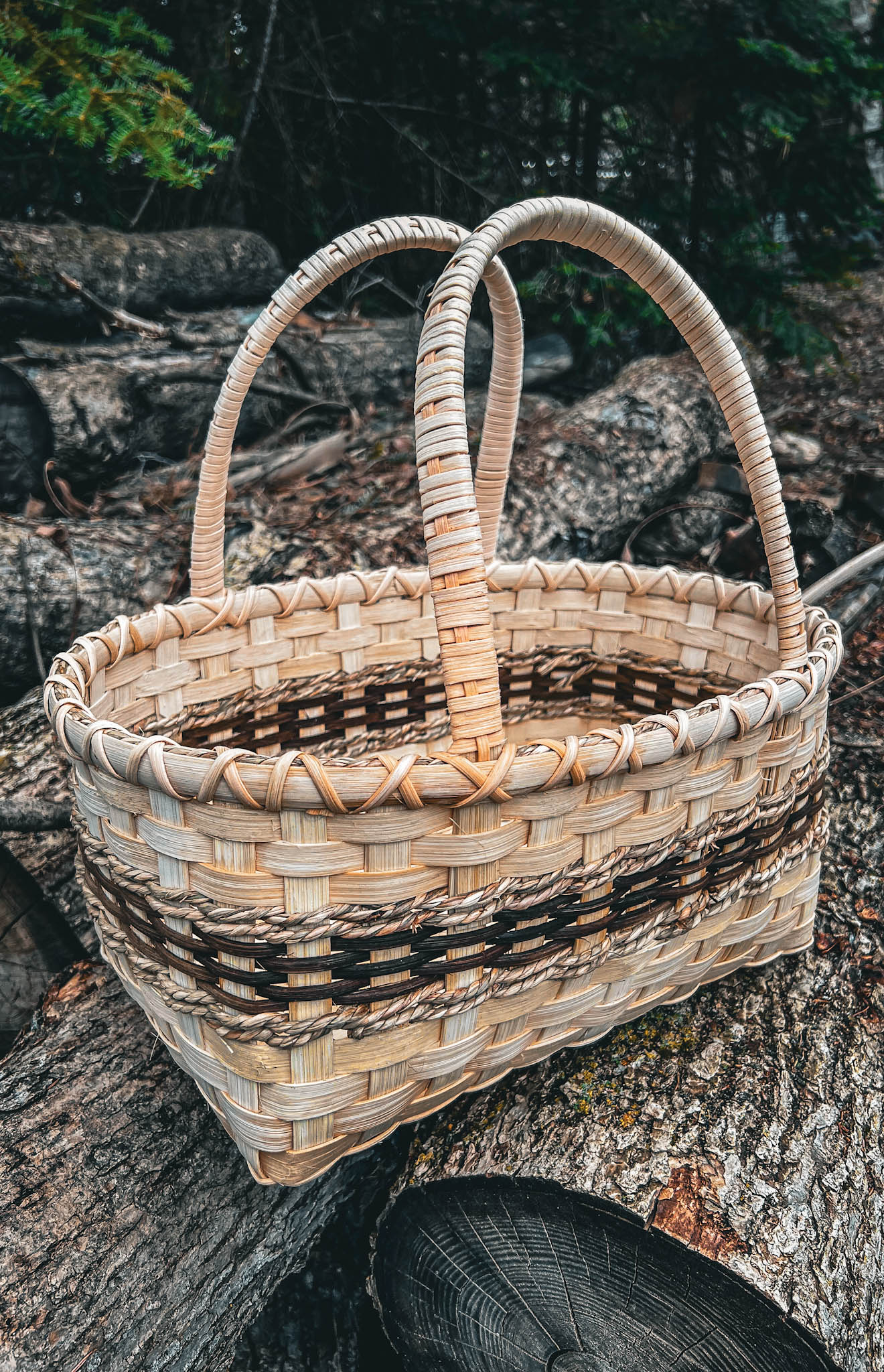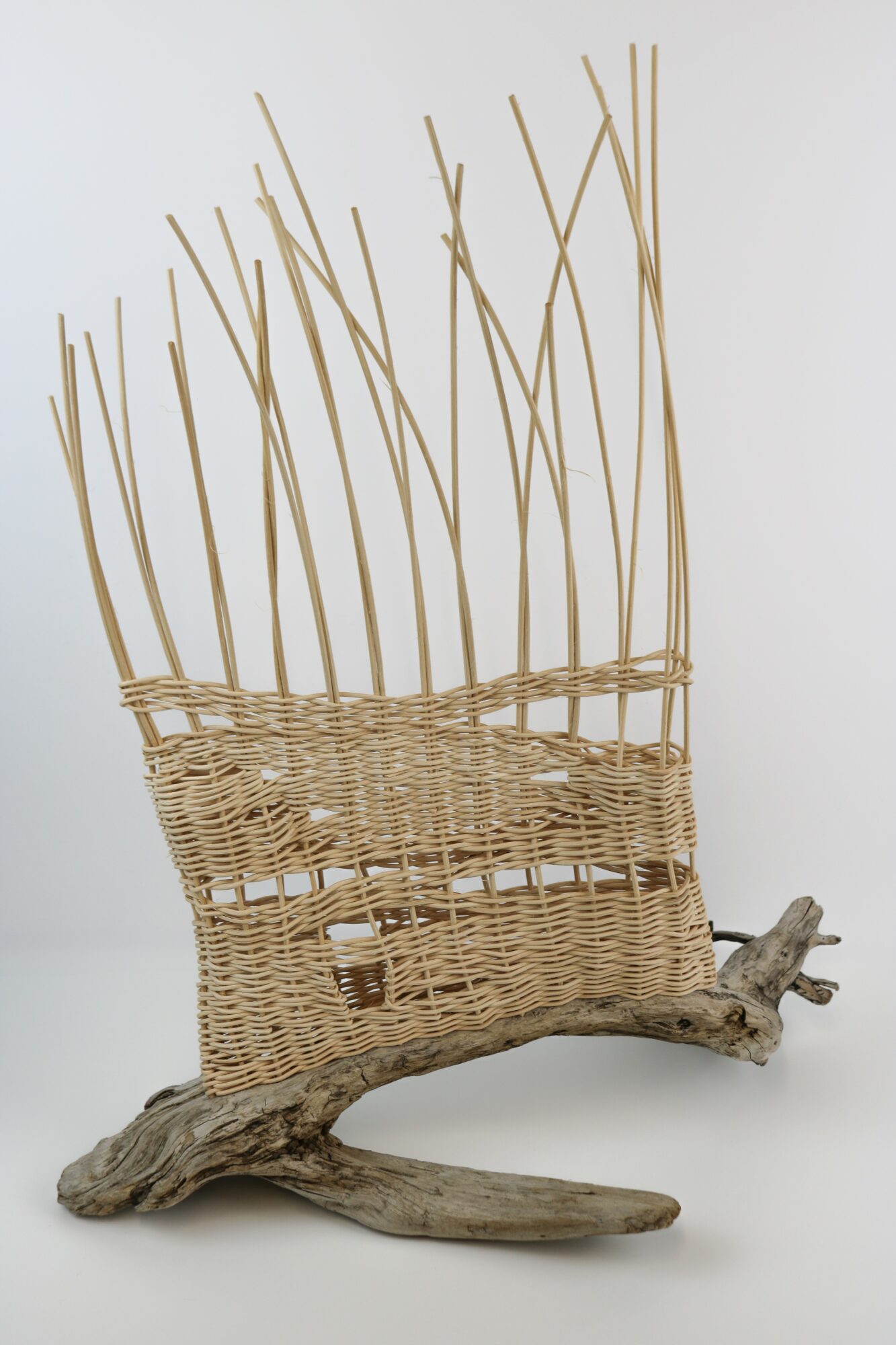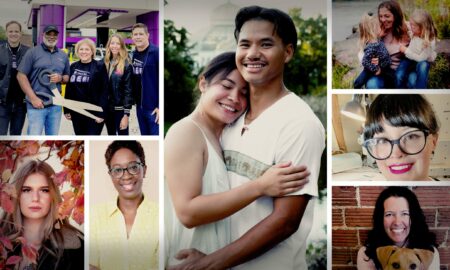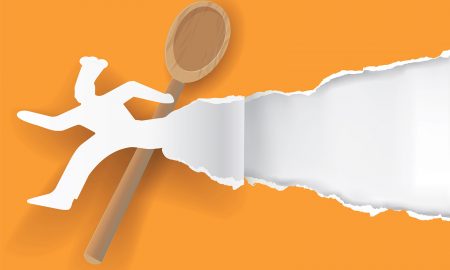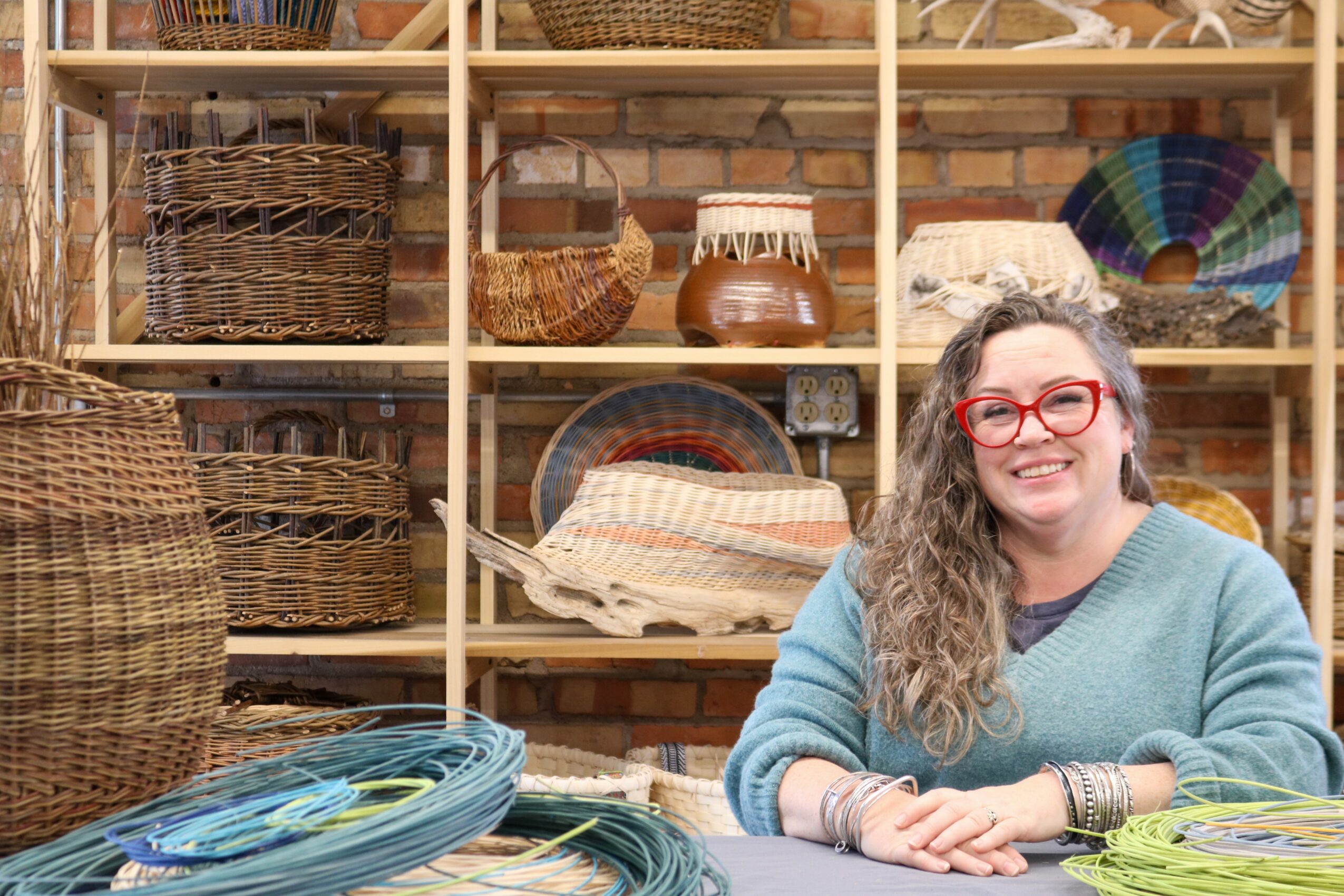

Today we’d like to introduce you to Shannon Lucas Westrum
Hi Shannon, thanks for joining us today. We’d love for you to start by introducing yourself.
My love of texture and fibers started when I convinced our elderly neighbor to teach me to crochet as a child. I spent hours creating with yarn, wood, beads, paper, and leather. From there, it was a continuous weave of materials and techniques, adding some here, discarding there. I was a maker. I began serious practice as a basket maker in my early 20’s with local community education and fiber arts guilds. When I became a mom, I divided my time between work and my girls, so art took an intermission.
Five years later, a my small daughter looked up at me and doubted my claim that I did, in fact, make the basket in her hands. She had never seen me create anything, not really, in her entire life. I made the decision in that moment that I wanted my daughters to understand all that we could do together. We made a change and I re-embraced the artist I knew myself to be. I began weaving at home, developing my own style. Then seeking out opportunities to learn wherever I could find them.
My work is a blend of cultures, traditions, and technical skills. I’ve spent years asking questions about culture and tradition and how I represent them in my art. I live in an area surrounded by Native lands, and in fact grew up learning Ojibwe art in school, as it was the only art instruction available to me other than drawing or painting. I do not work with those art forms as they are not mine culturally. This lead me to search for, and pursue, learning traditional European weaving techniques and materials, learning from weavers from around the country, from Spain, and Denmark. From there, I took a pilgrimage to Ireland, working with Joe Hogan, a traditional Irish basket maker turned modern artist, and an arts residency at Shankill Castle in Kilkenny, IE. As an American, their cultures and traditions are only ancestrally mine, though their technical aspects are now part of my practice. I blend my years of study and research into my body of work, creating my own style and techniques.
I am now exploring the fusion of modern and traditional techniques with locally sourced materials as they apply to art basketry. It’s not unusual for a family excursion to include my teenagers beach combing for driftwood and interesting rocks, or into the forest to collect grasses, tree barks, antlers, and rushes. I’m moved to create unique sculptural shapes that flow with and emphasize the natural elements I’ve used as my focal points. These materials are combined with primary materials of round reed (rattan) or willow to create both sculptural pieces and those with practical uses. As an artist from a small rural area, the bridge between art and craft is a narrow one that I want to continue to explore.
We all face challenges, but looking back would you describe it as a relatively smooth road?
I’ve been a basket maker for almost 30 years. For many of them, I was working a full time retail job and raising children. I’m lucky to have been able to shift my day to day into a position where I now teach basketry full-time.
Appreciate you sharing that. What else should we know about what you do?
My love of texture and fibers started when I convinced our elderly neighbor to teach me to crochet as
a child. I spent hours creating with yarn, wood, beads, paper, and leather. From there, it was a
continuous weave of materials and techniques, adding some here, discarding there. I was a maker. I
began serious practice as a basket maker in my early 20’s with local community education and fiber
arts guilds. When I became a mom, I divided my time between work and my girls, so art took an
intermission.
Five years later, a my small daughter looked up at me and doubted my claim that I did, in fact, make
the basket in her hands. She had never seen me create anything, not really, in her entire life. I made
the decision in that moment that I wanted my daughters to understand all that we could do together.
We made a change and I re-embraced the artist I knew myself to be. I began weaving at home,
developing my own style. Then seeking out opportunities to learn wherever I could find them.
My work is a blend of cultures, traditions, and technical skills. I’ve spent years asking questions about
culture and tradition and how I represent them in my art. I live in an area surrounded by Native lands,
and in fact grew up learning Ojibwe art in school, as it was the only art instruction available to me
other than drawing or painting. I do not work with those art forms as they are not mine culturally. This
lead me on a pilgrimage of sorts, learning traditional European weaving techniques and materials
from weavers from around the United States, from Spain, and Denmark. I was then awarded the
Region 2 Arts Council Fellowship and a Residency at Shankilll Castle months apart, which allowed
me to travel to Ireland, spending a week working with Joe Hogan, (literally the man who wrote the
book on traditional Irish basket making, turned modern artist), and a week with his son Ciaran, who
teaches willow weaving workshops near Galway city. While working with the Hogan’s, I found that
moment of pure bliss, working with basketmakers from across Ireland, making willow a Skib (Irish
Potato Basket) and so much more. From there, I moved to Shankill Castle in Kilkenny, IE, working in
the studio of the painter Elizabeth Cope, and studying with Heike Kahle, a German basket maker in
Ireland. As an American, their cultures and traditions are only ancestrally mine, though their technical
aspects are now part of my practice. I blend my years of study and research into my body of work,
creating my own style and techniques.
I am now exploring the fusion of modern and traditional techniques with manufactured and locally
sourced materials as they apply to art basketry. It’s not unusual for a family excursion to include my
teenagers beach combing Lake Superior for driftwood and interesting rocks, or into the forest on my
late grandfather’s farm, north of Lake Itasca, to collect grasses, tree barks, antlers, and rushes.
I’m moved to create unique sculptural shapes that flow with and emphasize the natural elements I’ve
used as my focal points. Working with deer antler and driftwood, I allow them to activate the work,
they determine the shape, the flow, the color. My pieces cannot start until I make the space to allow
the inspiration – the curve in an antler, or the burl in a willow root, are all it takes to design the next
piece. These materials are combined with my primary materials of round reed (rattan) or willow to
create both sculptural pieces and those with practical uses. My current project is an exhibition that
reflects life in the north woods, it will debut in January as a collaboration between texture and color,
symbolism and feel.
Some pieces are sculptural and symbolic, some are vessels that contain the swirl of colors outside
my bedroom window. I have harvested an abundance of natural materials this year, thanks to the
support of a generous community. I am finishing up the cord-making of day-lilies, irises, chives and
rhubarb skin collected from gardens and front yards, as I use them in my final pieces. The cat-tails,
sawgrass and swamp grasses from my now yard prefer to act as weavers, so I’ll allow them their
choice.
Can you talk to us about how you think about risk?
I began working in basket making by taking workshops, following patterns and learning techniques. I still seek out new workshops or classes every year, but the challenge of using traditional materials in new ways keeps me challenged and motivated.
Contact Info:
- Website: https://ShannonLucasWestrum.com
- Instagram: https://www.instagram.com/shannonlucaswestrum/
- Facebook: https://www.facebook.com/shannon.lucaswestrum/
- Youtube: https://www.youtube.com/@wildflowerstudios
